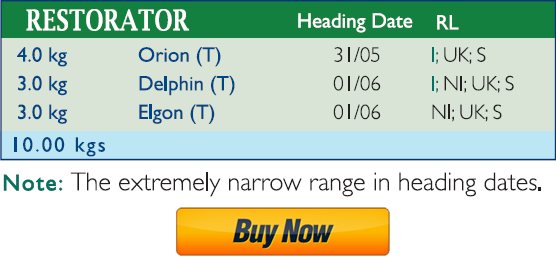
A targeted overseed can very successfully & economically fill in the bare patches in a damaged sward & restore productivity to what basically is a good, sound sward, simply requiring rejuvenation. Complete reseeding is not warranted in all farm situations. A big advantage of overseeding is its relatively low cost.
Many fields/paddocks were badly poached, and damaged by machinery in 2012, and unless repaired, grass production will be severely reduced this season. Most open patches within paddocks will be invaded by weed grasses & weeds. As a result, some fields may need complete reseeding or parts of the field may need reseeding. However, on some farms these paddocks cannot be done without this spring (if it ever starts !), or cashflow will not permit full reseeding this spring.
Overseeding can be used as a short-term alternative to full reseeding. Advances in machinery technology and following best practice is leading to a greater level of success, consistently.
Success depends on getting as much direct seed to soil contact as possible, and having moist conditions after sowing.
Within our Green Acres range for 2013, we have formulated a specialist overseeding blend, RESTORATOR, specifically for this task, which is a blend of three proven late heading tetraploid grass varieties.
Tetraploids have bigger seed & accordingly more energy exists within the seed.
A seeding rate of 6-8 kilos per acre is recommended.

The best time for overseeding is late April/early May or mid summer after taking a cut of silage/a tight grazing.
N.B. The existing grass sward MUST be very short.
Following overseeding, ensure the paddock is grazed at light covers for the remainder of the season, in order to encourage seedling germination and tillering.
It will only be on the third or fourth rotation that the new grass plants will start contributing to the sward.
Where the grass sward is open and there is clear ground visible, overseeding using the harrow system
(Method 1) can be a viable option. However where there is a dense mat of weed grasses the chance of achieving success is much reduced. A slot seeding system
(Method 2) may be the best option – and preferable to ploughing in certain farm situations.
1. Grass harrow/light cultivation:
Grass harrow the pasture in order to level the divots/clods and in order to create some soil tilth.
Spread our RESTORATOR mixture at 6-8 kilos per acre with a fertiliser spreader.
Spread 1-2 bags per acre of 18-6-12 or 10-10-20.
Phosphorus is especially important for root growth & development.
Roll with a Cambridge roller or a light roller.
Spread a light coating of slurry at 1,000 – 1,500 gallons per acre.
Graze the pasture frequently therafter, ideally with lighter stock.
If following sowing there is a dry spell, continue to spread light levels of slurry or soiled water after grazing.
A post emergence weed spray may be required within a few weeks of overseeding, if weeds are a problem.
2. ‘Stitching in’ Machines
Graze off or mow the pasture as tightly as possible (to 3.5 cms / 1.5 inches).
Specialist machines exist for ‘stitching in’ new grass seed into the existing sward or slot seeding into a pasture that may or may not have been sprayed off (eg. Guttler; Vredo Agri Seeder; Aitchison Drill; Moore Unidrill).
Attention must be paid to soil acidity which increases in the immediate proximity of the new seeds when surface humus is decomposing. We recommend applying a granular lime (eg. GranuCal) to overcome surface acidity.
In addition in some field situations pest control may be required eg. leatherjackets & slugs.
Sow 6-8 kilos per acre of our RESTORATOR mixture.
Just as with Method 1, spread compound fertiliser, give a light roll, apply a light coating of slurry, and a post emergence herbicide spray, if required, following establishment of the new grass plants.










